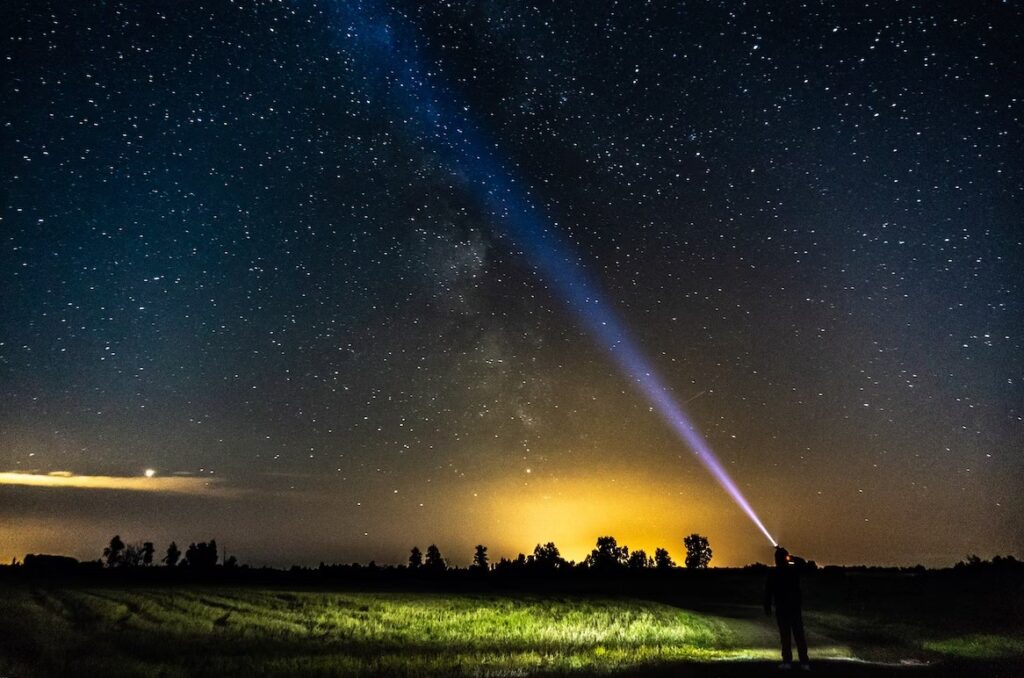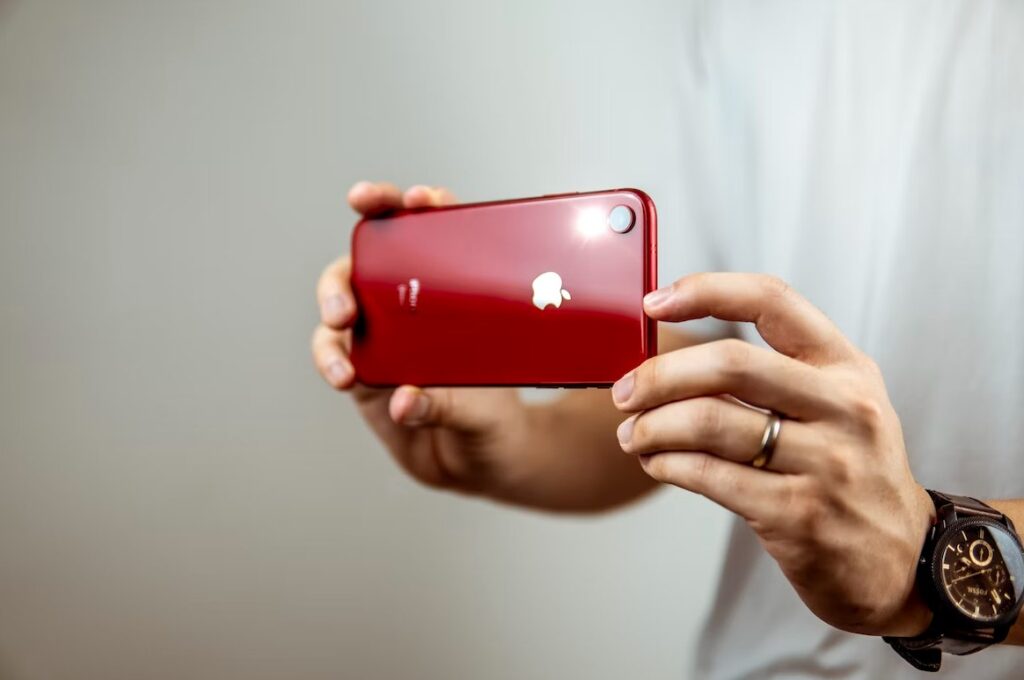Taking pictures of the night sky wasn’t as seamless a few years back like it is now. With the advancements that we have witnessed over time, it isn’t surprising that astrophotography has become a lot simpler than it was a few years ago.
We have come a long way with camera settings, hardware, and software configurations, which have now made it a lot easier for people to take stunning pictures of the star and the sky just using the iPhone.
However, we understand that not everyone is well-versed with the techniques and if you are one of them, struggling to find your footing, this article will give you all the insights you need to know about capturing star photos with your iPhone.
Table Of Contents
What Equipment Would You Need to Capture Star Photos with Your iPhone?
When it comes to taking star photos using your iPhone, there are certain stipulations that you need to be aware of. Keeping a check on the list of all the necessary equipment is crucial to make the transition a lot simpler and ensure that the quality of the images you are capturing is worth the effort you put in.
That said, the following are some of the important equipment you have to keep with you during the expedition:
1. Tripod
In most cases, chances are that you will be capturing the star photos using the long exposure feature on your iPhone. And, given how sensitive the feature is, it isn’t surprising that a tripod is a necessity. You want to ensure that your iPhone is still and stable when you are finally taking a shot of the sky.
The best way to achieve that is by using a tripod. Furthermore, capturing stars in the night sky is a tedious and time-consuming task. Holding the iPhone for a prolonged period can thus get very tiring, very quickly.
Also, when you are setting up your tripod, you have to ensure that it stands upright and firmly on the ground. If the tripod is flimsy, it will make the final shot shaky and not worth all the hassle. Furthermore, if you have an Apple Watch, you can use it to capture the stars in the night sky a lot more easily.
2. Flashlight with a red light
This might sound confusing but you do need a flashlight with a red light. This is an absolute must, especially if you want to streamline things for yourself. The reason why you don’t want a white light is due to the convenience.
When you are out at night photographing the night sky, the red light is a lot less harsh on the eyes compared to the white light. So, having access to a red flashlight, which is a lot less harsh on the eyes, makes the whole experience a lot more pleasant.
Also, the flashlight acts as a guide for you on the nights when you are trying to find a comfortable place to sort things out for yourself.
3. Powerbank
Another factor that we’d 100% recommends you prioritize when capturing images of the outdoor night sky is a power bank. You don’t know how long it will take you to capture the most perfect shot. You also don’t know the kind of power your iPhone would drain when you have the camera app open for a prolonged period.
In that case, your best way out of the issue would be to carry a power bank with you. Even if you aren’t using the power bank, there’s nothing wrong with keeping it with you when you are stuck during times of crisis.
4. Install a third-party app
This is a hit or misses among people. While some iPhone users are all for it, some people prefer using the staple iPhone camera app.
At the end of the day, you should do what feels right for you. But, that said, we’d recommend that you install a third-party app like Night Sky to make it easier for you to capture and refine the image of the stars in the night sky.
With these elements out of the way, you are now ready to take your night star images in the night.
Step-by-Step Guide on How to Capture Stars in Night Sky using an iPhone
Now with the basics out of the way, the next thing you have to focus on are the steps involved in capturing the stars in the night sky.
It might sound lame when you come to think of it in hindsight. However, for novice photographers who want to nail capturing the image the right way, we’d recommend that you have this sorted without any questions asked.
Following are some of the tips that you can follow through:
1. Staying still is the key
Stars are not static in the sky, especially if you want to capture one that’s not as prominent and is getting overshadowed by the clouds around.
So, the first step is to stay still while you are capturing the image. When it comes to capturing the star images, chances are that you will use long exposure. Hence, a tripod is a must in the process.
You want to keep things as still as possible and for that, a good-quality tripod is an absolute must. Also, think of the tripod as an investment, especially if you want to pursue photography in the long run.
2. Check the weather
Capturing stars with your iPhone heavily relies on the weather in the surrounding. The last thing that you want to do is pack everything and leave to capture the photos only to realize that it’s cloudy outside.
Cloudy weather is your biggest antagonist when it comes to taking star pictures in the night sky. Always go out on days when the night sky is the darkest. This is something you can’t compromise on.
3. Cross-check the image quality
If you are thinking of taking your star’s images on your iPhone using digital zoom, be assured that it will immediately ruin the quality of the image drastically. Digital zoom on your iPhone’s camera app uses internal software to zoom in, which makes the final images look terrible and very distorted.
Instead, you have to prioritize using optical zoom, which works a lot more seamlessly. The reason why optical zoom works a lot better compared to digital zoom is that it uses the telephoto lens, which brings the lens closer to the subject (the stars in this case) without distorting the image.
4. Choose manual mode
The standard and automatic iPhone camera settings that are available will not work well when you are trying to capture the night sky.
Instead, you have to switch to your iPhone’s manual setting in the camera app. This gives you the ease to adjust the ISO, shutter speed, and a variety of other settings too. It makes it a lot easier for you to adjust the lighting as well, which is another benefit.
5. Make use of noise reduction
When you are capturing an image during the nighttime, it will be muddled with noise, making the image seem very distorted. One way to fix that is by using the Noise reduction feature on Lightroom.
It helps you minimize the noise, refine the image and make the overall image look a lot more enticing.
Leveraging these individual tips should make it easier for you to capture the stars in the night sky using your iPhone only.
But, remember that we talked about installing third-party apps to further amplify the look of your starry night image on your iPhone? Well, the good news is that some amazing applications make that happen for you.
What are the best Astrophotography Third-Party Apps for iPhone?
So, you have all the basic tips laid out and understood about capturing stars in the night sky on your iPhone. But, now you want to further refine the image and make it look more enticing.
What would you do in that case? Our tip would be to use high-quality third-party applications that are specifically available for iPhones.
The following are the best ones:
- NightCap Camera – It supports four astronomical modes that enable you to capture the splendor of the night sky. Also, it comes with AI settings adjustment in the app, which makes it easier for you to capture the night sky without any hassle.
- ProCam 8 – This is a paid application that supports a variety of filters and photo editing tools that make it easier for you to refine the stars you captured.
- Halide – If you want to learn more about capturing stars and the night sky, this is the app. It comes with a lot of tutorials, which should make things a lot easier for you to learn.
Conclusion
And, with that, we have come to an end. If you are sitting there confused about how to go about capturing stars in the night sky, we hope this article gives you all the insight. Starting with your iPhone can seem challenging. But, with the right tips, you should be able to work through the process.



